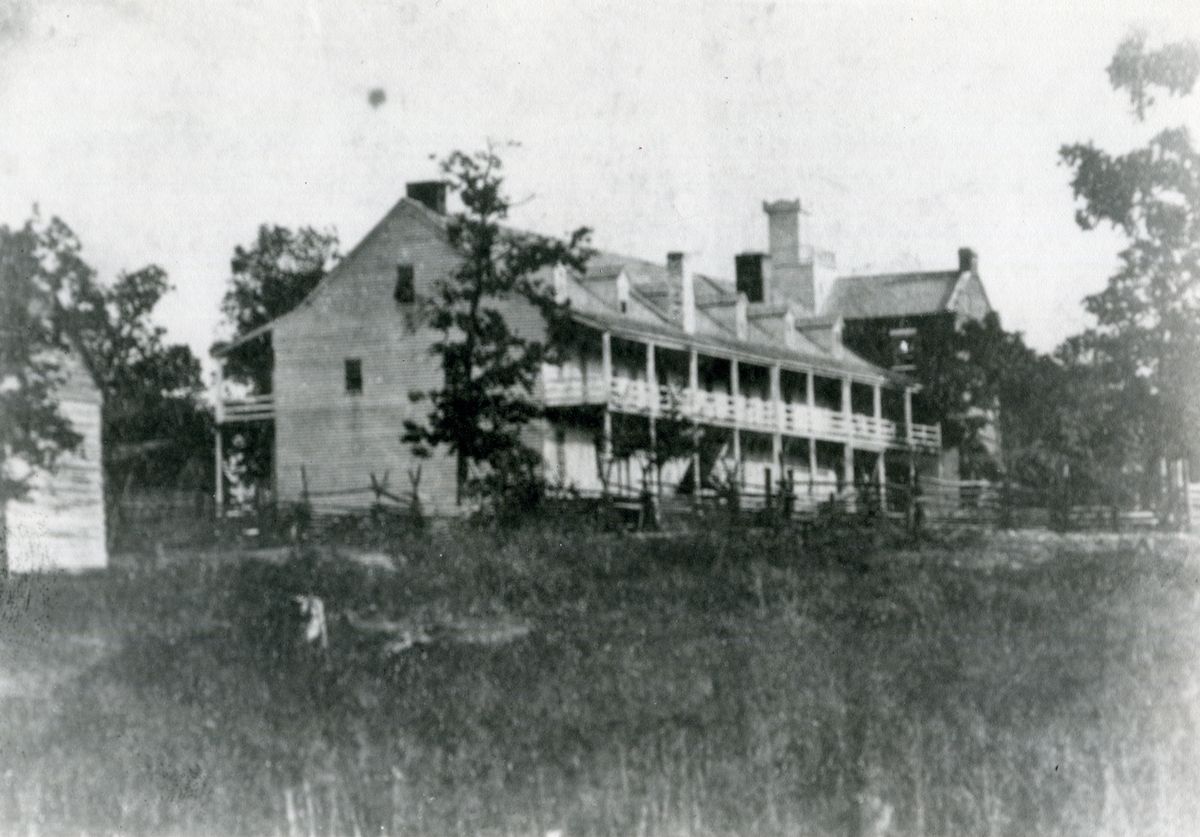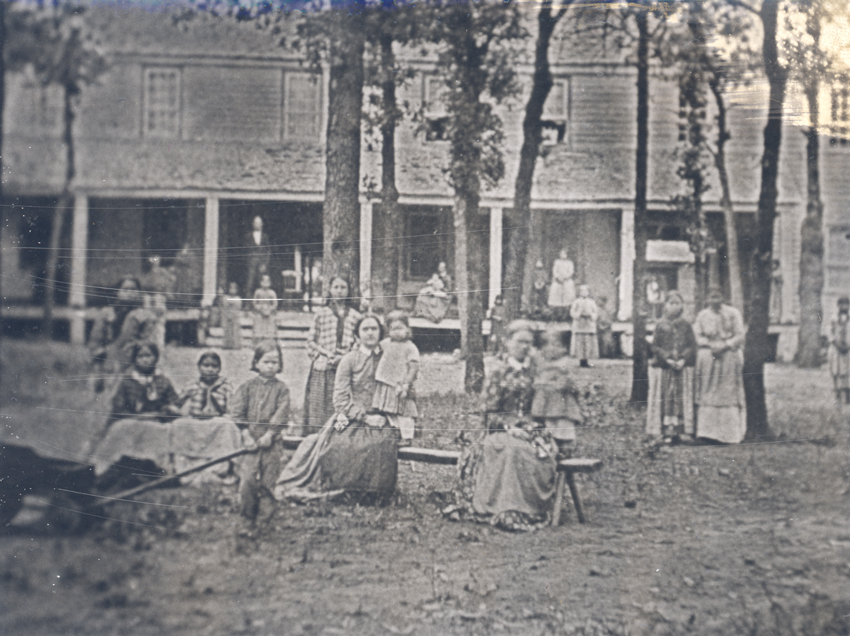The Encyclopedia of Oklahoma History and Culture
CHICKASAW SCHOOLS.
In their original homeland in present Mississippi, beginning in 1799 Chickasaw Nation citizens first experienced English-language education through missionaries. The most significant of those efforts began in 1819 as a result of the Indian Civilization Fund Act, which invited Protestant missionaries to teach religion if they also taught secular subjects.
Under that legislation the Cumberland Presbyterian Association founded a school for Chickasaw children, Charity Hall, in 1820, and the South Carolina-Georgia Synod established Monroe, a demonstration farm school, in 1822. The boarding school/demonstration farm model was a forerunner of the "manual labor academy," a model of education considered inappropriate for white children but deemed appropriate for women, African Americans, and American Indians.
Chickasaws, however, found this model to be effective, as agriculture was a significant part of their nation's economic base, and even appropriated funds to build three more schools: Tokshish, Martyn, and Caney Creek. The objective of these schools was "to train the head, heart, and hand" of Chickasaw children. Consequently, the course of study included religious, academic, and domestic or industrial components. The Chickasaw people viewed education as essential to their continuing success in negotiations with the United States government. Nevertheless, Congress passed the Indian Removal Act in 1830, and in 1837 the Chickasaw people were forcibly relocated to the Indian Territory (present Oklahoma).
The Chickasaws determinedly rebuilt their nation. Knowing that education was crucial to their ultimate survival, in their first written laws in 1844 they founded a tribal academy, the Chickasaw Manual Labor Academy for boys. They soon opened four other boarding schools, for both males and females. Those schools were the Wapanucka Institute for girls (1852), the Bloomfield Academy for girls (1852), the Collins Institute (Colbert, 1854), and the Burney Institute for girls (1859). Remarkably, those schools were established by the Chickasaw Nation twenty years before the opening of the first federally operated off-reservation boarding school.
The Chickasaws partnered with Protestant denominations in their endeavors. Although the tribe supplied most of the funds, the missionary board controlled the schools' operation and hired the teachers from New England colleges and academies. The curriculum at the best-known Chickasaw boarding school, Bloomfield Academy, had academic, social, domestic, and religious components. Basic academic education was offered, as well as instruction in "social graces" such as drawing, painting, and vocal music. The domestic curriculum included instruction in sewing, cooking, and housework, which were considered an important part of the acculturation or "civilization" process. Missionaries emphasized the religious curriculum, consisting primarily of scripture memorization, as they strove to replace Chickasaw traditions with Christian teachings. The students were not allowed to speak the Chickasaw language at school, and in the case of many mixed-blood families, at home. Because of the outbreak of the Civil War in 1861 the boarding schools were closed.
After the war the Chickasaws reopened them in 1876 and maintained complete control until Oklahoma statehood in 1907. That period was regarded as the golden age of the Chickasaw boarding schools. During those years Chickasaw leaders changed the institutions' curricula. At Bloomfield, for example, religious training was minimal. Bloomfield's academic curriculum was considered equivalent to that of a junior college. In addition, students were instructed in social courses such as art, music, elocution, theater, and dancing. Domestic education was notably absent. Bloomfield enjoyed such a good reputation that the school was termed "the Bryn Mawr of the West." Bloomfield graduates were known as "the Bloomfield Blossoms." The course of study was designed to educate students to become leaders, to participate in both Indian and white communities, and to help Chickasaws transcend significant social and economic boundaries.
The U.S. government took control of the schools with the passage of the Curtis Act in 1898. At the turn of the century the Chickasaw Nation operated thirteen day schools, four academies, and an orphans' home. By Oklahoma statehood in 1907 the government had laid the groundwork for a state educational system by using the schools of the Five Tribes as models. Government officials shut down the Chickasaws' school system. Only Bloomfield Academy, the pride of the Chickasaws, remained in operation until 1949, but out of their control.
See Also
AMERICAN INDIANS, AMERICAN INDIANS AND CHRISTIANITY, AMERICAN INDIANS AND EDUCATION, CHEROKEE MALE AND FEMALE SEMINARIES, CHICKASAW, CHOCTAW SCHOOLS, CREEK (MVSKOKE) SCHOOLS, SEMINOLE SCHOOLS
Learn More
H. Warren Button and Eugene F. Provenzo, History of Education and Culture in America (Englewood Cliffs, N.J.: Prentice-Hall, 1983).
Sarah J. Carr, "Bloomfield Academy and Its Founder," The Chronicles of Oklahoma 2 (December 1924).
Arrell M. Gibson, The Chickasaws (Norman: University of Oklahoma Press, 1971).
Joe C. Jackson, "Survey of Education in Eastern Oklahoma from 1907 to 1915," The Chronicles of Oklahoma 29 (Summer 1951).
Irene B. Mitchell, "Bloomfield Academy," The Chronicles of Oklahoma 49 (Winter 1971–72).
Citation
The following (as per The Chicago Manual of Style, 17th edition) is the preferred citation for articles:
Amanda J. Cobb, “Chickasaw Schools,” The Encyclopedia of Oklahoma History and Culture, https://www.okhistory.org/publications/enc/entry?entry=CH034.
Published January 15, 2010
© Oklahoma Historical Society



